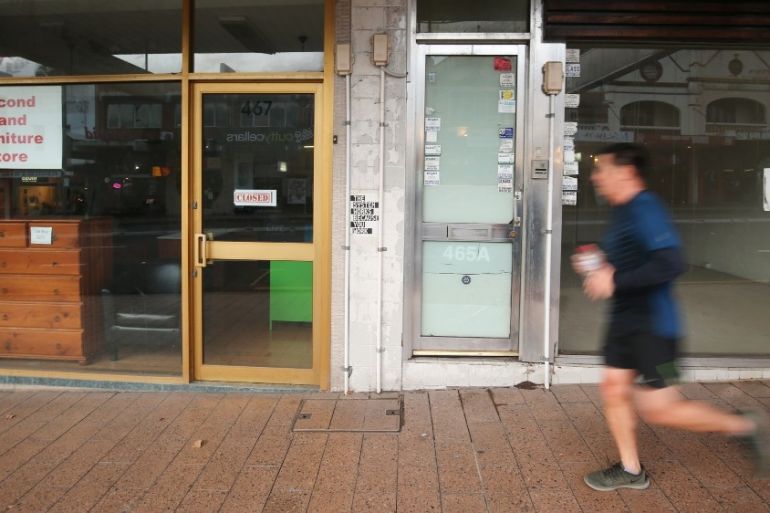Coronavirus fuels steepest-ever drop in Australian jobs
Hundreds of thousands lost jobs as a result of the coronavirus lockdown, as government warns worse is yet to come.

Australian jobs plunged by the most on record in April as hundreds of thousands of people became unemployee as a result of coronavirus lockdowns, with Prime Minister Scott Morrison warning Australians to brace for more “hard news”.
Thursday’s data from the Australian Bureau of Statistics (ABS) showed employment in April dropped by 594,300, the largest fall on record.
Keep reading
list of 3 itemsCaptive audience: Locked down Australians tune into zoo life
Australia faces recession even as it prepares to reopen economy
The unemployment rate shot up to 6.2 percent, the highest since September 2015. Unemployment stood at 5.2 percent in March.
Treasurer Josh Frydenberg, who spoke to reporters alongside Morrison after the announcement, said the job losses were “heart breaking” and that economic numbers would get worse before getting better.
There was a significant decline in the number of people looking for work, which meant fewer people than expected were counted among the unemployed.
As a result, the participation rate fell 2.4 percentage points to 63.5 percent from April, the lowest since 2004 and well below the 65.2 percent forecast.
|
|
“The unemployment rate rose far less than most had anticipated in April, but that masks a sharp fall in employment and we still expect the unemployment rate to rise further over the coming months,” Marcel Thieliant of Capital Economics wrote in a note.
The data is the first official estimate of unemployment in Australia since the COVID-19-related mobility restrictions in late March prompted businesses to close.
Slow recovery
The figures come as Australia’s central bank predicted the country’s gross domestic product (GDP) could shrink by 10 percent in the first half of the year with unemployment hitting 10 percent by June and staying high throughout 2021.
The Reserve Bank of Australia (RBA) has cut rates to a record low of 0.25 percent, flooding the financial system with cash and even buying government bonds to lower borrowing rates for business and support the economy.
Additionally, Prime Minister Scott Morrison has pledged spending worth more than 10 percent of GDP, including a 130 billion Australian dollar ($83.6bn) subsidy to employers to keep staff they might otherwise have let go.
The ABS data showed underemployment, or the number of people already working but looking for more hours, spiked 4.9 percentage points to 13.7 percent.
The number of hours worked between March and April in seasonally adjusted terms fell by 9.2 percent, double the decrease in employed people, the data showed.
The ABS estimates that a combined group of 2.7 million people were affected by either job loss or having their hours reduced for economic reasons between March and April.
This group was much larger than the number of people who gained employment or worked increased hours between March and April, underpinning the net results.
Economists say the labour market is unlikely to improve rapidly even though parts of Australia’s economy are now re-opening with the rate of growth in new cases having slowed to about 0.1 percent.
The “reopening will be a gradual process and not everyone who lost their job during the lockdown will immediately find a new one,” Thielant said.
The dire Australian numbers follow those in the United States, which showed 20.5 million jobs lost in April, and the unemployment rate rising to 14.7 percent. The true unemployment rate may be closer to 19.5 percent, the US government said in a note attached to its report.